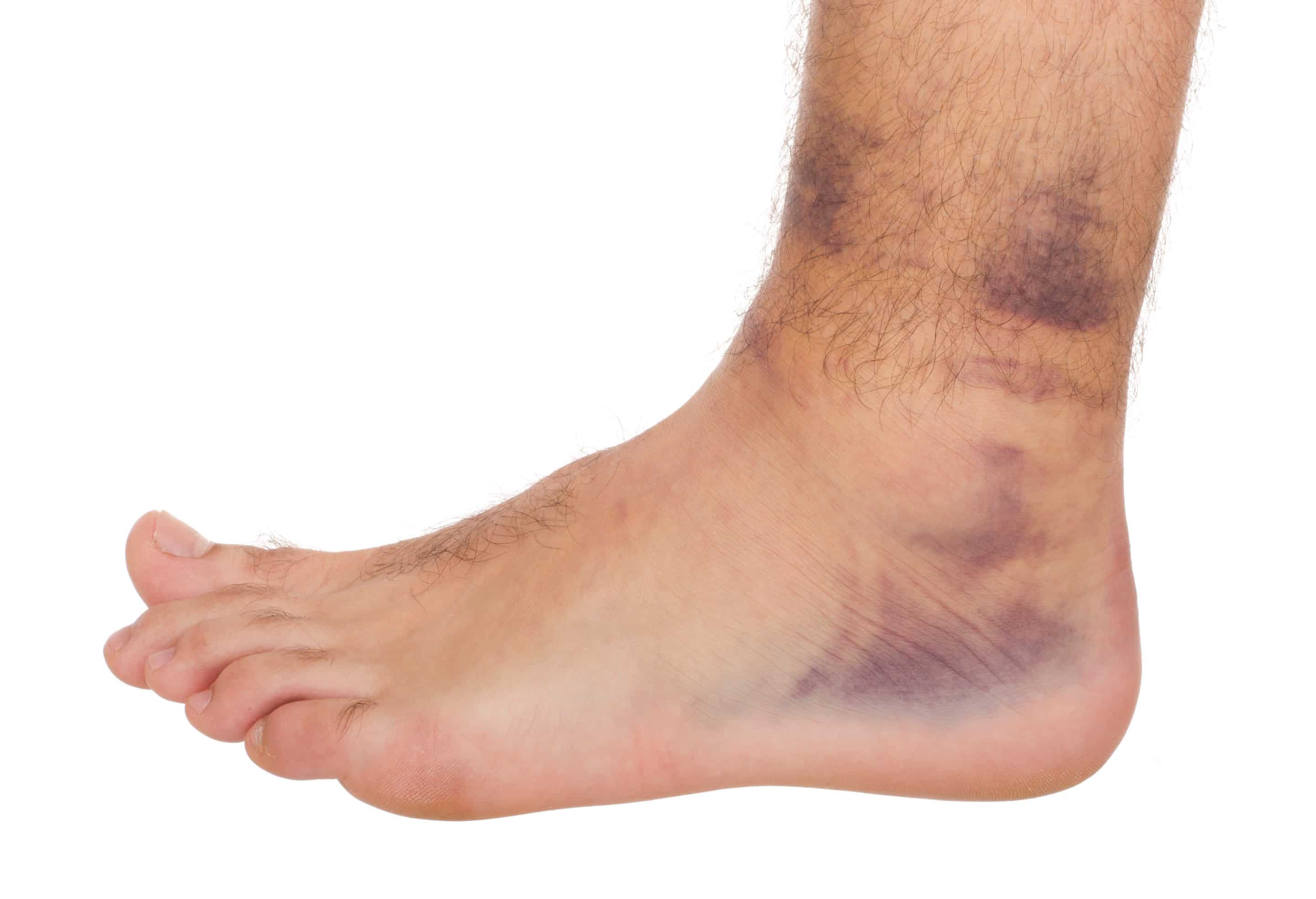How do I know if I need surgery?
You might not know what you’ve done to your ankle yet, but you know it wasn’t good. Pain? Swelling? Bruising? Difficulty flexing or bearing weight? None of it is good.
Ankle injuries commonly fall into a few categories, but all of them have the same best recommendation: treat the problem well and make sure you provide yourself the best recovery possible! That way, you can reduce the risk of your injury now resulting in more problems later.
Let’s take a closer look at some of the more common ankle injuries and how they should be addressed.
Ankle Sprains
Ankle sprains are arguably one of the most common sports injuries, and it’s not that you even need to be an athlete to suffer one. Simply stepping off a curb wrong can result in a jolt of pain and some time needed to recover.
A sprain occurs whenever the ligaments surrounding a joint (in this case, the ankle), are stretched beyond their normal range of motion. Unexpected twists and rolls of the foot are often responsible.
You would be hard-pressed to find someone who has never sprained their ankle, which is partly a good thing. Most people do recover from ankle sprains without any perceptible consequences. However, there are varying degrees of ankle sprains, with more severe cases more likely to lead to lasting problems:
- Grade 1 sprains feature only slight stretching or tearing of the ligament. Your ankle may feel a bit tender with some mild swelling and stiffness, but the ankle still feels stable overall.
- Grade 2 sprains feature a more severe tearing of the ligament. Pain is moderate, swelling and bruising are often present, and it will hurt to walk. (You should avoid doing so as much as you can.)
- Grade 3 sprains feature a complete tear of the affected ligament. Pain is intense, swelling and bruising are severe, and any attempt to bear weight on the ankle will be met with major pain and instability (so don’t do it!).
No ankle sprain – even one that feels relatively mild – should ever be ignored. Rest and taking weight off the affected ankle is the bare minimum that all cases should receive, and you should never hesitate to contact us whenever you have any concerns whatsoever.
The more severe an ankle sprain is, the more likely it can result in chronic pain or instability. Do not delay in contacting us if you are in considerable pain or your ankle is giving out.

Ankle Fracture
Since the ankle is comprised of more than one bone, a “broken ankle” can include any one or more of them. We tend to classify ankle fractures based on the location of the break(s).
Fractures of the ankle can occur due to hard impacts (e.g. from significant falls or auto accidents), or from severe twists or rolling of the foot and ankle.
Some fractures are relatively simple in nature, where it is potentially possible to walk on them. Others are more severe, deforming the shape of the ankle and/or making walking difficult or impossible.
Much like sprains, ankle fractures can cause sudden pain, swelling, bruising, and instability. In fact, it can sometimes be difficult to determine whether an injury is a sprain or a fracture.
The best tip for telling the difference? Don’t try. Contact us instead because you don’t want to get that type of diagnosis wrong!
Peroneal Tendon Injuries
While the ligaments that surround the ankle joint connect bone to bone, tendons connect muscle to bone.
Two tendons, called the peroneal tendons, run along the outer side of the ankle. One attaches to the outer part of the middle of the foot while the other connects near the inside of the arch.
The peroneal tendons can become overstrained, either through sudden force or repetitive motions over time. Sports that involve frequent pivoting of the ankles, such as basketball, football, gymnastics, and dancing, have a higher risk of injuring the peroneal tendons. Having an abnormality in your foot structure, such as high arches, can also increase one’s risk.
Like ligaments, tendons can also become overstretched and inflamed (tendonitis) or suffer partial-to-full ruptures.
An injury to one or both peroneal tendons often results in pain in the ankle (but sometimes lower leg), swelling, instability, and warmth in the painful area.
Care for peroneal tendonitis is much the same as that for a sprain. Rest and ice the area as soon as possible, keeping your foot elevated whenever sitting or lying down. If you do not feel any improvement within 48 hours, you are in quite a bit of pain or have any questions or concerns whatsoever, give us a call.
Staying Alert on Your Ankle Care
As we mentioned here and in our previous blog, proper ankle care matters. Not recovering properly from even a minor injury can have repercussions in the future, contributing to re-injury, chronic pain, and instability.
We approach all ankle injuries not just in terms of helping a patient get back to action as soon as possible, but also doing all we can to ensure their risk of later trouble is as low as possible. The more we know about your foot and ankle history, the better a job we can do of identifying potential risks and heading them off at the pass.
Schedule an appointment with Comprehensive Foot and Ankle Centers by calling us at (816) 455-1155 or by filling out our online contact form. We have six locations throughout the greater Kansas City region that are ready to provide you the care you need.
